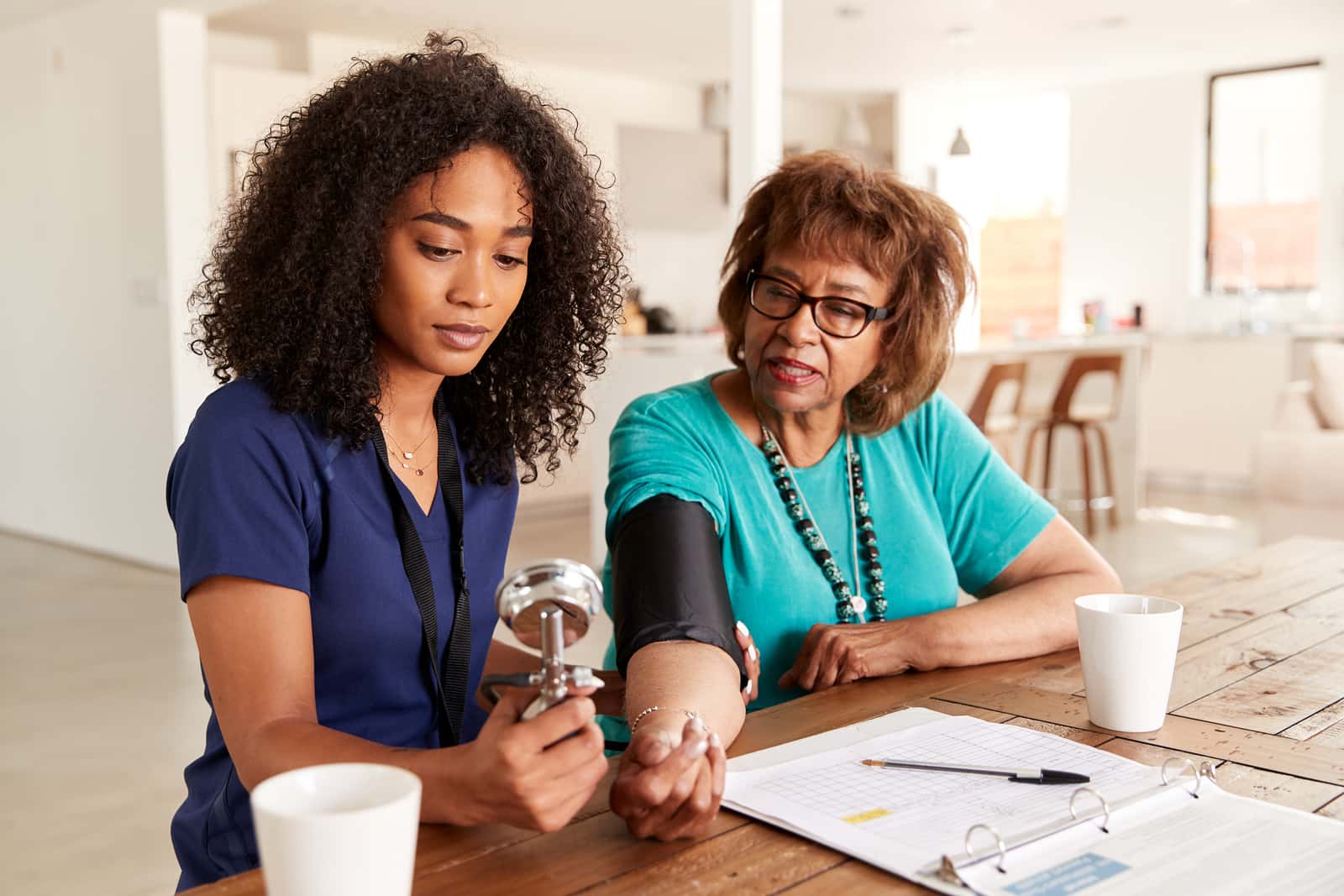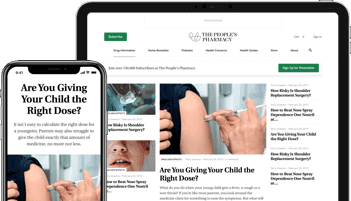
Do you take your blood pressure at home? Home blood pressure monitoring can be extremely helpful. Measuring your own blood pressure in the privacy of your home can help sidestep the nerves that lead to white coat hypertension for susceptible individuals.
African-Americans Get Extra Benefit from Home Blood Pressure Measurement:
While this practice can be helpful for anyone, the Dallas Heart Study has found it is especially useful for African-American adults (Hypertension, Sept 16, 2019). In this study, blood pressure measurements made at home were more accurate than those made in the clinic. In particular, blood pressure readings obtained by research associates out of the office were better for predicting a serious complication.
The condition, left ventricular hypertrophy, occurs when the lower left chamber of the heart develops thickened walls. This is probably a result of the heart muscle having to work harder against the resistance of high blood pressure. In a normal muscle, this extra exercise might produce additional strength. That could be a good thing. However, overdeveloped muscle in the heart means that a person is at higher risk for strokes or heart attacks.
The authors conclude:
“Our results underscore the importance of hypertension management programs outside the medical office to prevent hypertensive heart disease, especially in high-risk black adults.”
Measuring Blood Pressure Correctly:
Notice that the scientists conducting the Dallas Heart Study made sure that trained professionals made the out-of-office blood pressure measurements. They probably weren’t sure that volunteers could do this accurately. We think, however, that you should be able to do a very good job with your home blood pressure measurement if you are alert to the details. Unfortunately, blood pressure readings are often taken incorrectly. That’s in the doctor’s office, clinic and hospital. We suspect that few health professionals are familiar with the guidelines set up by the American Heart Association (AHA). In fact, we have observed technicians in a highly rated hospital make mistakes. Measuring blood pressure is important enough to get it right. This reader points out a couple of common errors.
Three Bad Mistakes to Avoid When Measuring Blood Pressure:
Q. The instructions for my home blood pressure machine make it clear that you should be sitting for five minutes at least, with your arm supported at just below heart height.
In the doctor’s office, you hop off the scale, climb on a stool and seat yourself with your legs dangling. Then the nurse takes your BP with your arm hanging down, nowhere near the level of your heart. How can that be accurate?
A. We too have been shocked to observe how often blood pressure measurements in the clinic are performed incorrectly. We do not understand why the people who are charged with measuring blood pressure are not instructed in the AHA recommendations:
Checklist Prior to Measuring Blood Pressure:
- Did you get time to relax? Whether you take your BP yourself at home or have it measured in a clinic setting, always take 5 to 10 minutes to sit and relax prior to any reading.
- Did you sit in a comfortable chair with back support and an arm rest? Were your feet flat on the floor? Never allow any health professional to take your blood pressure while you sit on an exam table with your feet dangling and no back rest or arm support!
- Did someone measure your arm circumference to make sure the BP cuff is the right size? We have NEVER seen a technician do this. If your arm is smaller or larger than average the wrong sized cuff will lead to misleading BP readings.
- Was your arm supported at heart level while someone was measuring blood pressure? This is critical to an accurate reading. We are constantly dismayed to see people having their blood pressure read with their arm dangling at their side.
- Did the technician, nurse or doctor talk to you or ask you a question while measuring blood pressure? If you responded, the chances are very good that your blood pressure was falsely elevated. NEVER speak during the minute or two it takes to pump up the cuff and let the air all the way out!
- Did you get to go to the bathroom prior to a BP measurement? A full bladder can impact your readings.
- Did the doctor, nurse or technician take your BP at least twice during your visit? One single reading is not adequate. It is recommended that two measurements be made some time apart. The two readings can then be averaged to get a better sense of your true blood pressure.
Measuring Blood Pressure At Home:
We have been advocating home blood pressure measurements for more than 40 years. Because of all the mistakes that can be made in the clinic we think regular home readings may be more reliable. They also lead to better blood pressure control (Lancet, March 10, 2018).
For more information on the proper technique for measurement as well as nondrug strategies for controlling BP, we offer this link:
You may also be interested in our eGuide to Blood Pressure Treatment.
Citations
- Rader F et al, "Superiority of out-of-office blood pressure for predicting hypertensive heart disease in non-Hispanic black adults." Hypertension, Sept 16, 2019. https://doi.org/10.1161/HYPERTENSIONAHA.119.13542


